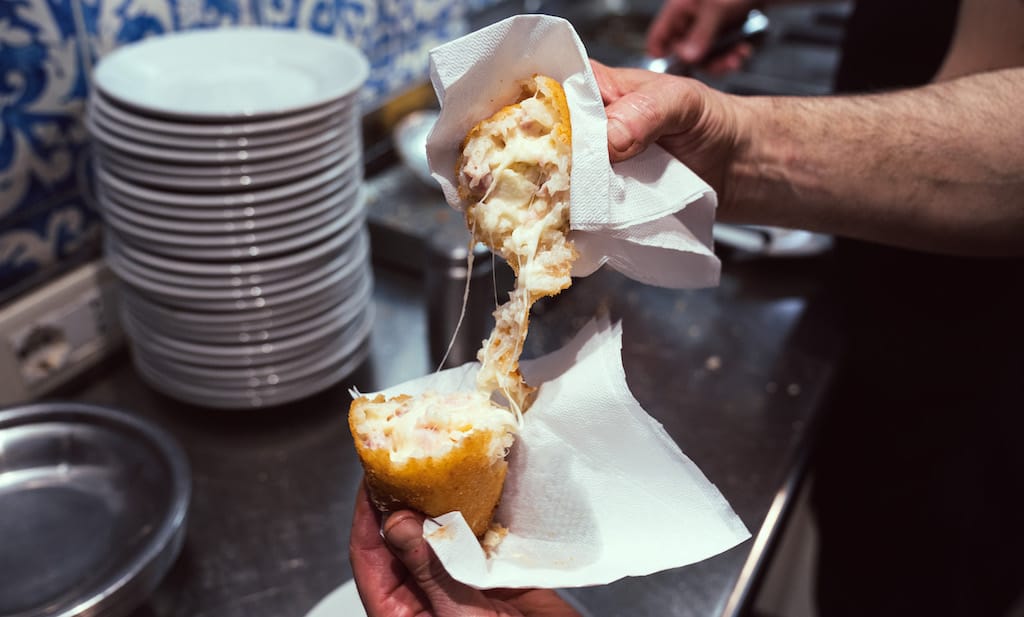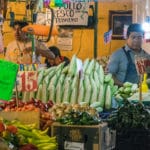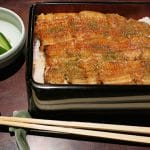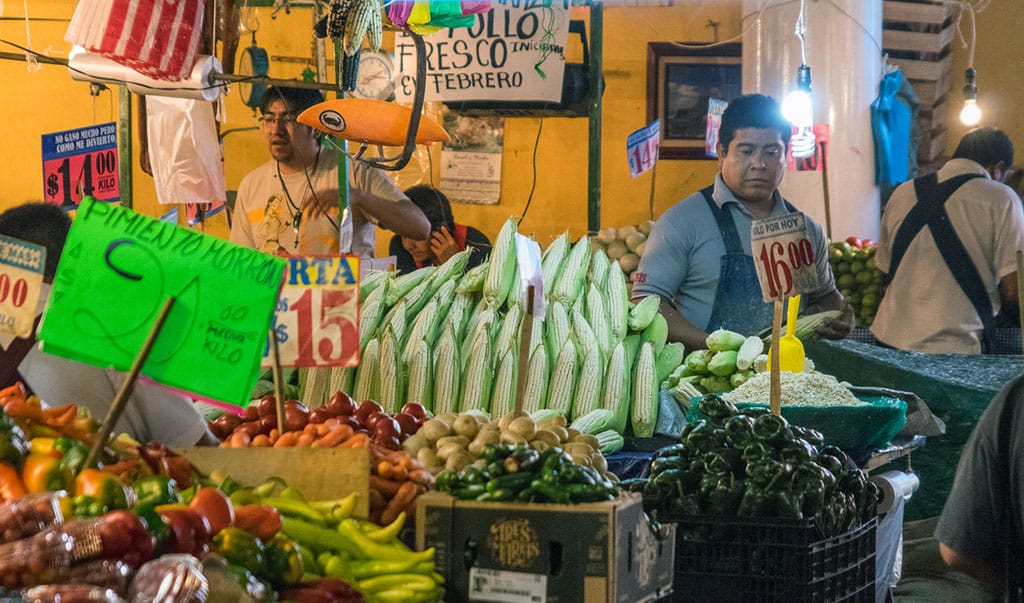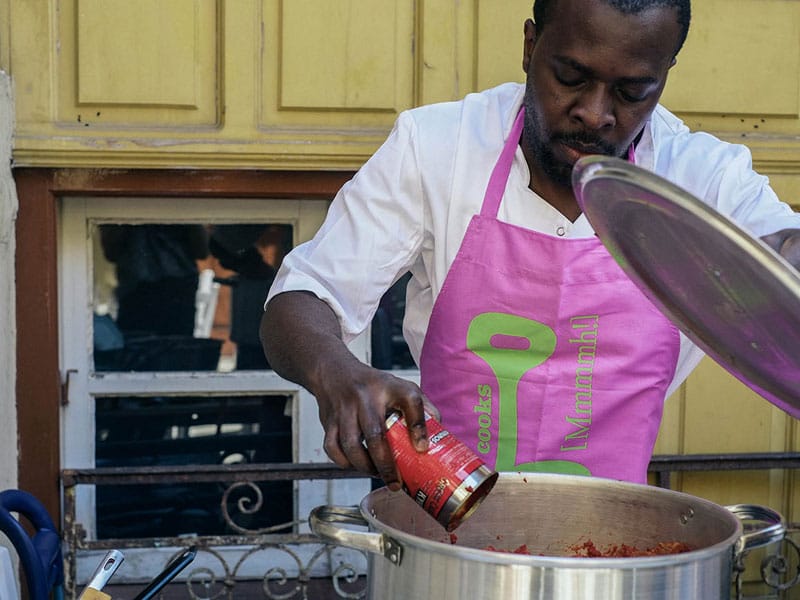Sicily’s rich, volcanic soil has borne many fruits: grapes, figs, peaches and citrus, to name just a few. It has also cultivated fiery debates and regional rivalries about details of traditional recipes; culinary wars whose significance is usually lost on most non-Italians. One such debate concerns the proper way of pronouncing one of Sicily’s most beloved snacks: the arancini (plural) – stuffed rice balls, battered and deep-fried. Whereas the west of the island refers to it as arancina, the east calls it arancino. Cue Spaghetti Western music.
Over the centuries, Palermo has experienced and absorbed various cultures and their cuisines. The influence of Arabs and North Africans play an especially prominent role, dating back to the period of 827-1091 A.D. Saffron, orange peel, raisins, rice: all entered Sicilian cuisine during this time. Arancini resemble the shape of an orange; their name being an etymological cousin of the Persian name for orange: naranji. In Italian grammar, oranges are followed by a feminine suffix: -a. Western Sicily accepted this rule. Traitors! On the other side of the Island, the arancini are often made in a conical shape inspired by Mount Etna, and derive their suffix from the Sicilian dialect: the masculine -o. Heathens!
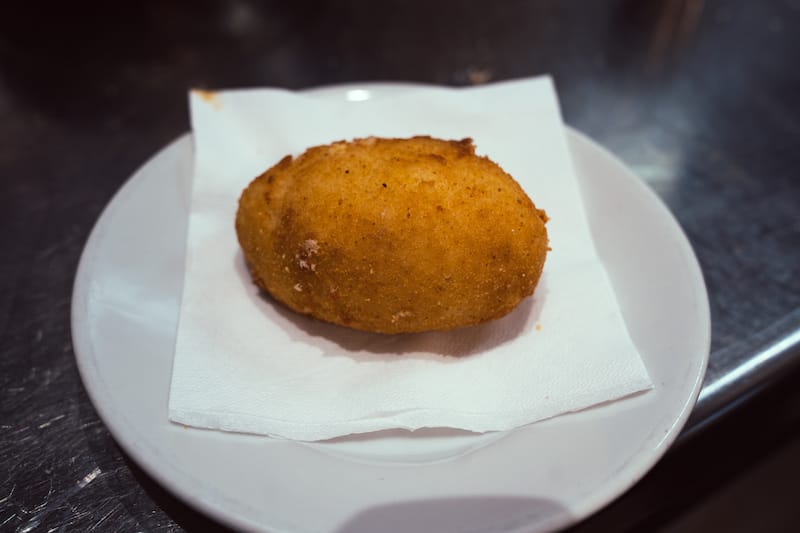
Both variations are poetic in name and imagery, and complement the bursting aromas of oil, grains, meat and tomatoes that quickly make you forget all about the spelling spat.
Finding the right spot to eat a good arancina in Palermo can be as tricky as settling on a name that would heal the bitterness of Sicily’s culinary wars. The city center teems with new places opening and serving Sicilian food, offering arancini at every corner. The choices are overwhelming, but fear not – we know just the right place if you’re looking for authenticity, tradition and quality.
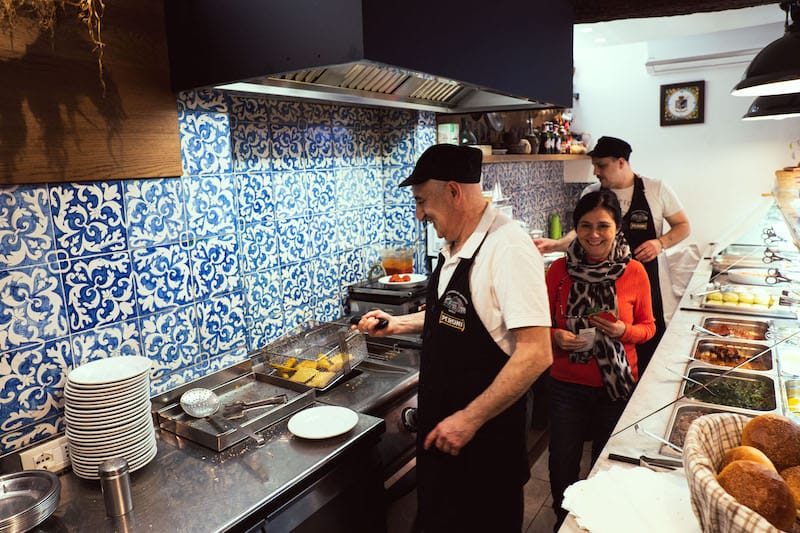
A few steps from the Teatro Massimo, you can find the historic Antica Focacceria del Massimo, more commonly known as “Da Basile” among locals. Basile is the last name of the Palermitan family that has been running the place for three generations now.
Despite its very central location and its fame, Da Basile is mostly frequented by Palermitan workers and local officials who flock there during their lunch break. For them, it is like eating at home. Indeed, the menu is similar to what they could prepare at home during a working week: simple and fast, with a generous heap of experience and know-how on top!
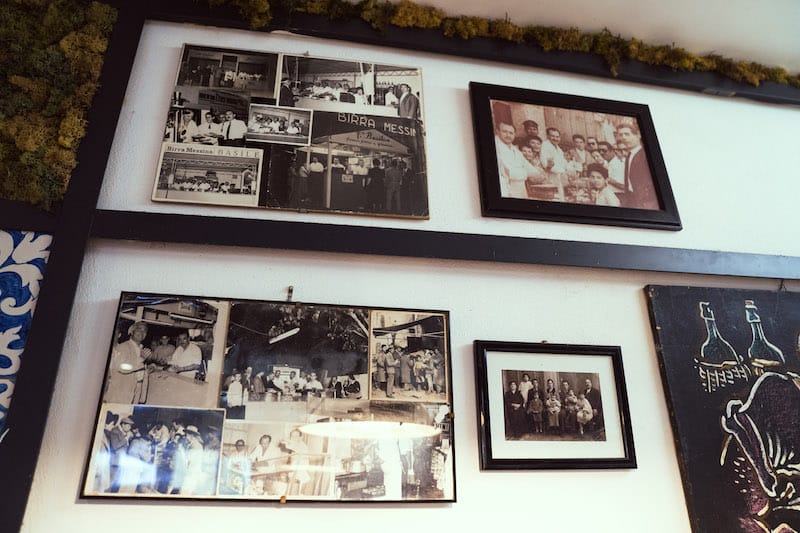
The Focacceria is today managed by Pasquale Basile, but it dates back to the thirties, when his grandfather launched the business out of a stall just outside the current restaurant. Their core menu hasn’t changed much; specialties remain the same: pani câ mèusa – bread with spleen; arancine originale that is made al burro (with mozzarella, bechamel and prosciutto); carne e piselli (meat and green peas), and sfincione, Sicilian-style pizza.
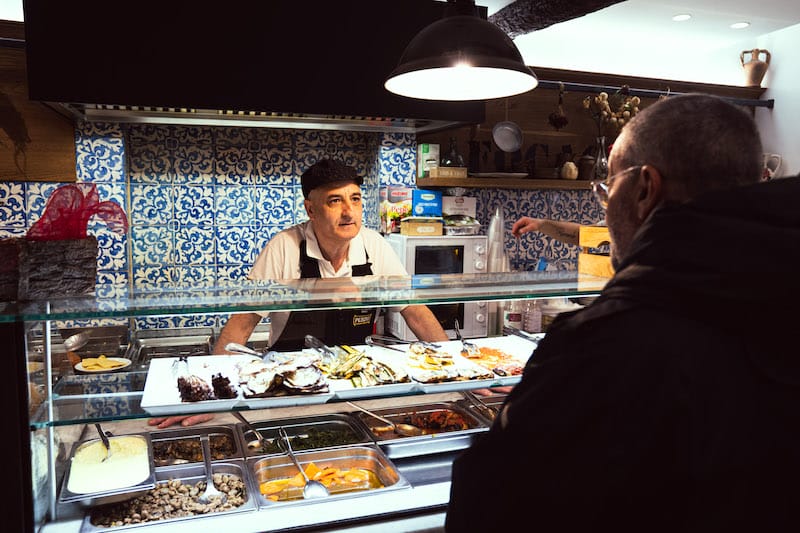
Several years after taking over the family business, Pasquale decided to expand its menu under the guidance of his wife, Maria-Theresa, who added primi (assorted pasta dishes) and secondi (meat or fish dishes) to the otherwise deep-fried delicacies. Pasquale and Maria-Theresa decided to renovate and restructure the restaurant, adding more space to cook and showcase the fresh creations prepared in the morning. Everything is cooked with the ingredients purchased daily at the Ortofrutticolo, the main fresh food market in Palermo.
The Focacceria opens around midday. People stand in line, chatting and laughing, waiting patiently for their receipts. We eavesdrop and hear people talking about life, greeting acquaintances, filling up on the news and gossip of the day. In Palermo, word-of-mouth is deeply ingrained and used as an effective marketing channel. This changes our perception of what the long queue represents. Pasquale explains: “We never advertise the Focacceria. All of the people who came, came here thanks to the passa parola [word of mouth].”
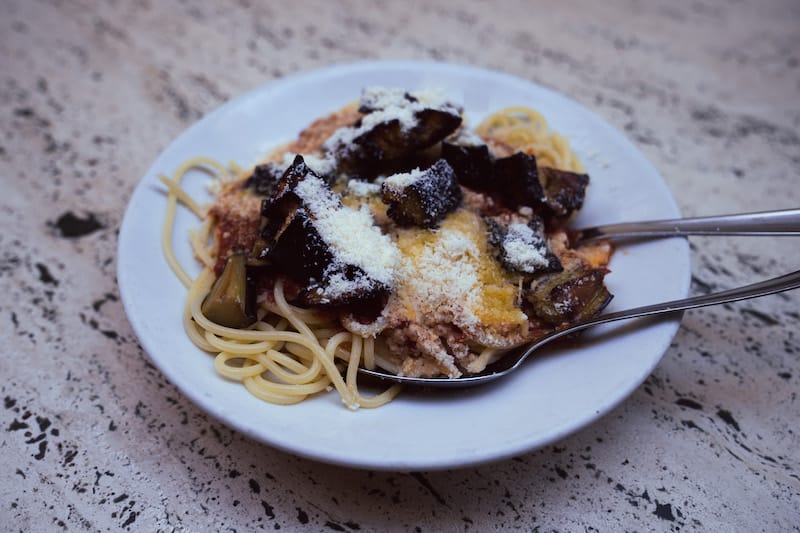
First, at the cash desk, Maria-Theresa takes your order and hands out vouchers for your preferred dish. A second line forms, much shorter this time as you go directly to the desired counter. Final step: swap the voucher for your dish and get a smile from Riccardo who is preparing pasta for the hungry mob.
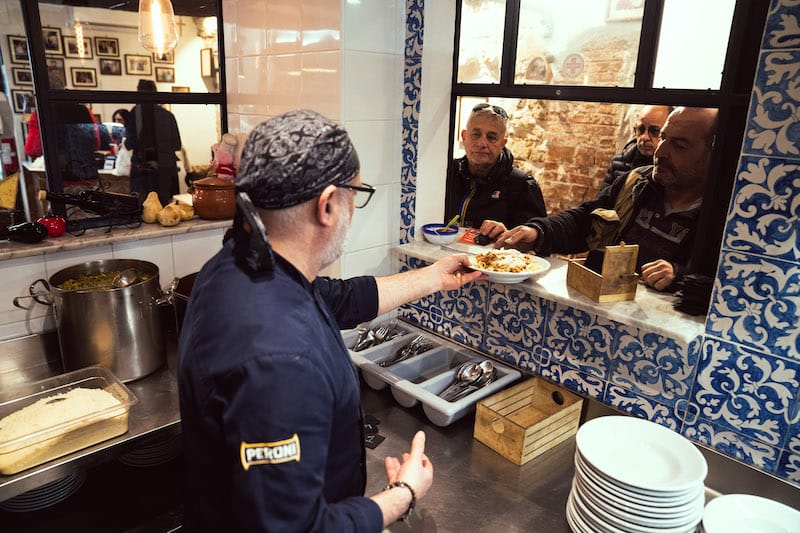
We take our freshly cooked, piping hot arancina and Pasquale, seeing our gluttonous hunger offers a useful warning: “Let it rest for two minutes before eating.” Arancini may look like oranges, but take a bite too soon and they will erupt like a volcano. We go out on the terrasse and give it a bite: hot, savory, crispy on the outside, melting inside.
When we ask Pasquale about his future plans, he laughs and replies: “I intend on enjoying my pension.” We plan on enjoying his arancini as often as we can until then.
Ségolène BulotFrancesco Cipriano
Published on March 29, 2023
Related stories
August 5, 2017
Mexico CityOne of the newest additions to our Mexico City walk repertoire is an exploration of the urban eco-reserve of Xochimilco. We start by taking in its colorful market and the traditional flavors found there.
May 2, 2013
AthensThe idea behind the “Migrant Kitchen” lunch series, first organized in Istanbul this fall by Istanbul Eats and Culinary Backstreets, is simple: get locals to sample the food of some of the immigrant communities living in their city and, through that experience, to learn more about those often invisible communities. In Istanbul, the series gave…
April 16, 2015
TokyoThe thought of eating eel can be off-putting, yet the super-fragrant, umami-tasting, velvety-textured delicacy is one of Japan’s prized foods. A best bet for dining like a true Tokyoite is to include an unagi (freshwater eel) meal at one of Tokyo’s top unagi restaurants serving only the one delicacy. The first Japanese character in the…







































